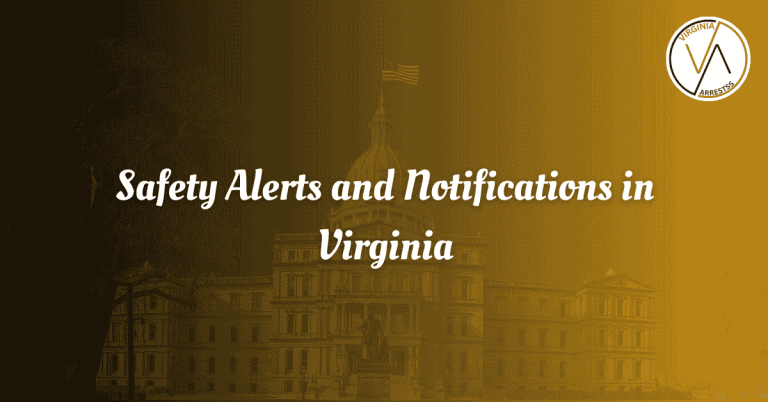Identifying Crime Hotspots in Virginia
Crime hotspots in Virginia can be a concerning issue for residents and authorities alike. Identifying these areas is crucial for maintaining public safety and implementing effective crime prevention strategies. By pinpointing where criminal activity is most prevalent, law enforcement agencies can allocate resources more efficiently and proactively address potential threats.
Understanding crime hotspots in Virginia requires a comprehensive analysis of various factors such as population density, socioeconomic conditions, and historical crime data. By analyzing this information, patterns and trends can be identified, allowing for targeted interventions and community outreach efforts to mitigate crime risks. It is essential to stay informed and vigilant about crime hotspots to ensure the well-being of residents and the overall security of the state.
Crime Hotspots in Virginia: An Overview
Virginia, a state rich in history and culture, is unfortunately not immune to crime. Understanding crime hotspots in Virginia is crucial for effective law enforcement and community safety. By analyzing data and identifying these hotspots, targeted strategies can be implemented to reduce crime rates and enhance public security.
Data Analysis for Targeted Strategies
Utilizing advanced data analysis techniques, law enforcement agencies and local authorities can pinpoint areas in Virginia with high crime rates. By identifying patterns and trends, targeted strategies can be developed to address specific issues in these crime hotspots. This data-driven approach allows for more efficient resource allocation and proactive crime prevention measures.
Collaboration for Effective Resource Allocation
Collaboration between law enforcement agencies, community organizations, and government entities is essential for effective resource allocation in combating crime hotspots in Virginia. By working together and sharing information, stakeholders can allocate resources strategically to address the root causes of crime and improve community safety.
Proactive Measures for Crime Prevention
Preventing crime before it happens is key to creating a safer Virginia. By implementing proactive measures such as community policing, neighborhood watch programs, and youth outreach initiatives, law enforcement agencies can deter criminal activities in identified crime hotspots. Engaging with the community and building trust are crucial components of successful crime prevention efforts.
Enhancing Community Safety and Security
Enhancing community safety and security in Virginia requires a multi-faceted approach that goes beyond traditional law enforcement methods. By investing in community resources, social services, and infrastructure improvements, crime hotspots can be transformed into safe and vibrant neighborhoods where residents feel secure and protected.
Stay Informed: Contributing to a Safer Virginia
Staying informed about crime hotspots in Virginia is essential for contributing to a safer state. By educating the public about crime trends, prevention strategies, and reporting mechanisms, residents can play an active role in reducing crime rates and promoting community well-being. Together, we can work towards a safer and more secure Virginia for all.
Frequently Asked Questions
Our Frequently Asked Questions section aims to provide comprehensive information on Identifying Crime Hotspots in Virginia, addressing common queries and concerns users may have.
What are crime hotspots?
Crime hotspots are areas within a city or region where criminal activity is concentrated. These areas often have higher rates of crime compared to surrounding areas, making them a focus for law enforcement and community efforts to reduce criminal activity.
How are crime hotspots identified in Virginia?
In Virginia, crime hotspots are identified through data analysis of reported crimes, trends, and patterns. Law enforcement agencies use various tools, such as crime mapping software, to visualize and analyze crime data to pinpoint areas with high levels of criminal activity.
Why is it important to identify crime hotspots?
Identifying crime hotspots is crucial for effective law enforcement strategies and crime prevention efforts. By focusing resources and interventions on these areas, law enforcement agencies can target criminal activity, deter future crimes, and improve community safety.
What factors contribute to the emergence of crime hotspots?
Several factors can contribute to the emergence of crime hotspots, including socio-economic conditions, population density, proximity to transportation hubs, and social disorganization. Understanding these factors is essential for developing targeted interventions to address crime in these areas.
How can communities address crime hotspots in Virginia?
Communities can address crime hotspots in Virginia through collaborative efforts between law enforcement agencies, local government, community organizations, and residents. Strategies may include increasing police presence, implementing crime prevention programs, improving lighting and infrastructure, and fostering community engagement to reduce crime and improve safety.
What are the challenges in addressing crime hotspots?
Challenges in addressing crime hotspots in Virginia may include limited resources, coordination between agencies, community trust issues, and the root causes of crime such as poverty and inequality. Overcoming these challenges requires a multi-faceted approach that involves various stakeholders working together towards a common goal of reducing crime and improving community well-being.







